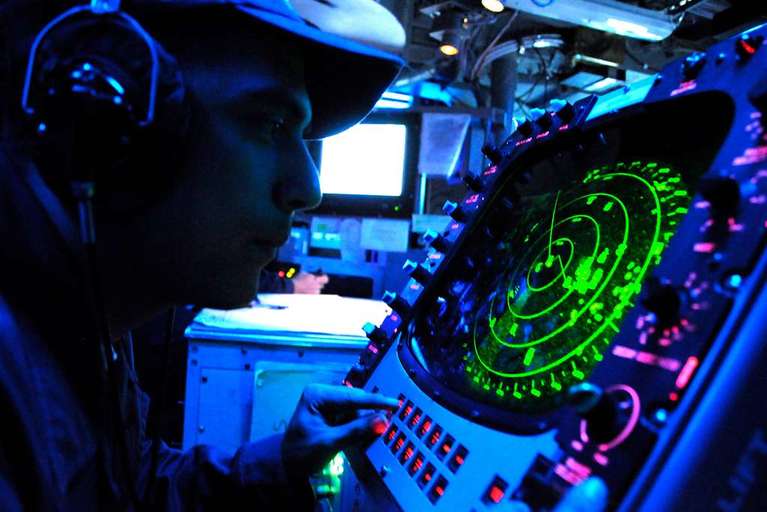
RADAR is an acronym for Radio Detection and Ranging. It is most popularly being used in defense and civil aviation to track Airplane, Helicopters, etc. At present time it is becoming an eye for every defense and civil aviation system. Suppose there is thick fog and the pilot is not able to see the runway to land a jumbo jet. Then what will happen? If you cannot see where you are going, how can you hope to land safely? Here RADAR plays its importance. Air traffic controllers (ATC) get around this difficulty using RADAR, a way of “seeing” that uses microwaves or high-frequency radio waves. RADAR was mainly developed to detect enemy aircraft during World War II, but now its application has been spread from weather forecasting to police speed-detector guns.
What is RADAR?

Radio Detection and Ranging (RADAR) Display
It is based on the use of radio waves. RADAR sends high-frequency radio signals like any wireless network. The radio signals are sent towards as a form of short pulses which may be reflected by objects in their path, in part reflecting back to the RADAR. When these waves intercept rapidly, part of the energy or radio signal is scattered back to the RADAR. The concept of RADAR is similar to hearing an echo from passive (non-radiating source that does not emit any radio signal) or active (radiating source that emit Radio signal like RF tags) . By hearing the echo or reflected radio signal RADAR is able to tell where the interception is occurring. Nowadays LIDAR is using the similar principle for detection of objects.
Units of the RADAR:
Every RADAR system contains these basic components:
- Transmitter
- T/R switch
- Antenna
- Receiver
Transmitter:
The RADAR transmitter contains a powerful radio frequency generator that radiates radio waves into space by the antenna. A High-frequency generator in the transmitter must generate low-noise and stable frequency at its output. RADAR system contains an amplification tube to generate high-frequency radio signals.
In the late 1930s invention of a magnetron tube was introduced in the RADAR transmitter to generate higher frequencies known as microwaves. But magnetron tube has some certain limitations like in low-average-power applications such as ship navigation RADAR and weather-forecasting RADAR.
For amplification of low-power radio signals, the Klystron tube is also being used in RADAR. This amplification tube is capable to handle many hundreds of kilowatts of average power. It has good efficiency and stability. The disadvantages of the Klystron tube are that it is usually large and it requires high voltages (i.e., about 90 kilovolts require to generate 1 megawatt of peak power).
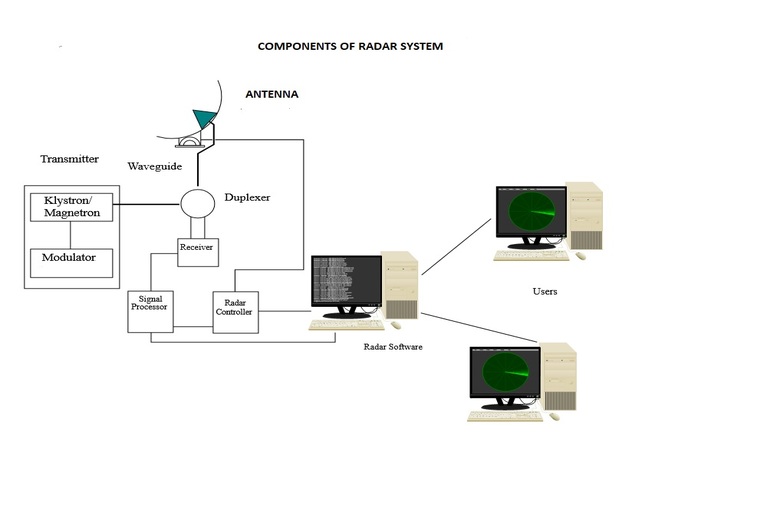
Units in RADAR system
Another modified version of the Klystron tube is known as Travelling Wave Tube (TWT). It has very wide bandwidths at low peak power, but when the peak power levels are increased to those needed for pulse radar, its bandwidth decreases.
In the modern technical era, solid-state components are being used to generate high power output. The main benefits of solid-state devices are that they need less maintenance, support high power output and wide bandwidth. An individual solid-state device generates relatively low power. High power can be achieved by combining the outputs of many individual solid-state devices.
From here we can say that every kind of RADAR transmitter has its merits and demerits.
T/R switch:
It is also known as a Duplexer. RADAR system uses two-way communication. In two-way communication, if we are using the same antenna for transmission and reception purposes then we require Duplexer. It is a microwave switch that connects the Antenna to the RADAR transmission unit to transmit the radio signal. Therefore, the RADAR cannot receive the signal during transmission time.
In the same way during the reception of the echo signal, the RADAR cannot transmit the signal during the reception time. In this way, Duplexer isolates both transmitter and receiver units.
Antenna:
The main function of an Antenna in any communication system is to convert the electrical signal into an electromagnetic signal and vice-versa. In RADAR a directive antenna concentrates the energy into a narrow beam that increases the accuracy of target detection. The most popularly used antenna in RADAR systems are given below:
- Parabolic Reflector
- Electronically Steered Phased Array
Parabolic Reflector:
In this antenna, a parabolic reflector is being used as a device that is used to collect or reflect electromagnetic or radio waves. This form of antenna is most popularly used in the RADAR system.
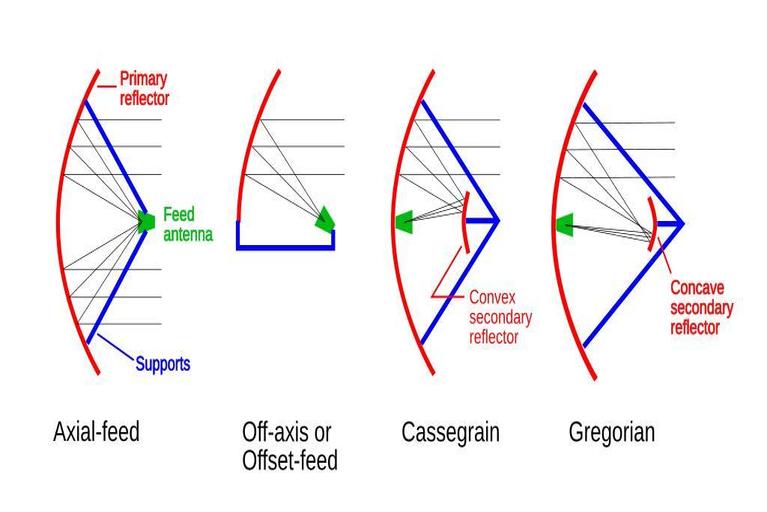
Various feeding techniques in parabolic antenna
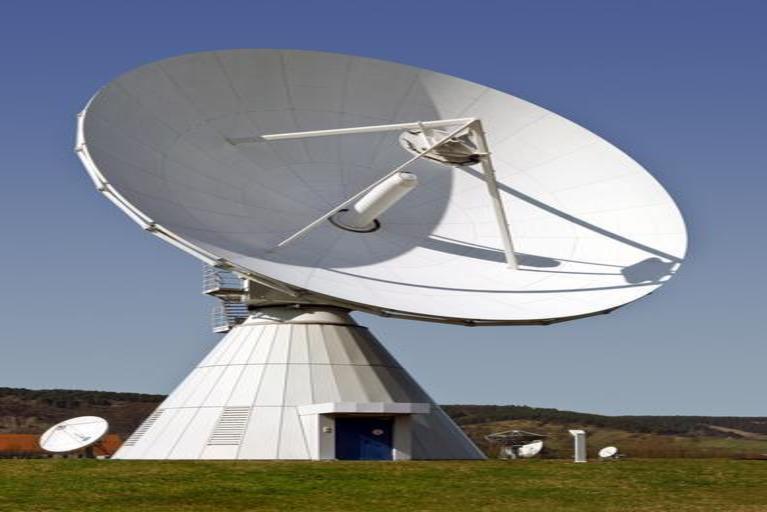
Parabolic reflector antenna
A dish antenna consists of one circular parabolic reflector and a point source situated in the focal point of this reflector. This focal point is known as the primary feed or feed of the antenna system. Various methods are being used to feed power to the reflector-type antenna. Some of them are given in the image.
The parabolic reflector is primarily constructed of metal, usually, a frame covered by metallic mesh at the inner side. The larger the diameter of the reflecting surface of the antenna the higher the parabolic reflector gain will be. The parabolic reflectors are also being used in setup-Box communication.
Electronically Steered Phased Array:
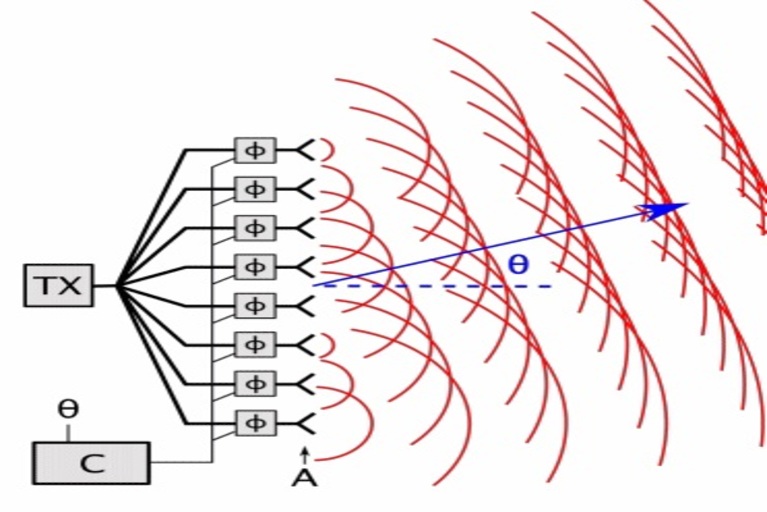
Electronically steered phased array antenna
In a phased array antenna whose single radiators can be fed with different phase shifts. The set of multiple radiators generate a common radiation pattern. In this antenna, the common radiation pattern is controlled and changed electronically. The electronic steering is very flexible and requires less maintenance than the mechanical steering of the phased array antenna.
By using this antenna we can control the detection range of the RADAR. And also can generate desired radiation pattern to achieve better performance.
Receiver:
RADAR receiver system helps in detecting the emissions from the radio signal of radar systems. It receives reflected radio signals and processes them. The receiver contains a classic superheterodyne radio receiver. It also has to filter the desired echo or reflected radio signals from clutter and receiver noise. Clutter and receiver noise interfere in the detection of the target. On successful reception, it uses several power amplifiers to amplify the echo signal. After that signal and data processing unit process the echo signal and send it to the display unit to show the position of the target on a screen.
Factors affecting radar performance:
The performance of the RADAR system can be judged on many factors. Some of them are given below:
- The maximum range of target detection depends on target size.
- The accuracy of its measurement of target location in angel and range value.
- Its ability to distinguish one target from another.
- Also, its ability to recognize the target.
Thanks for reading. See you soon with another exploration!

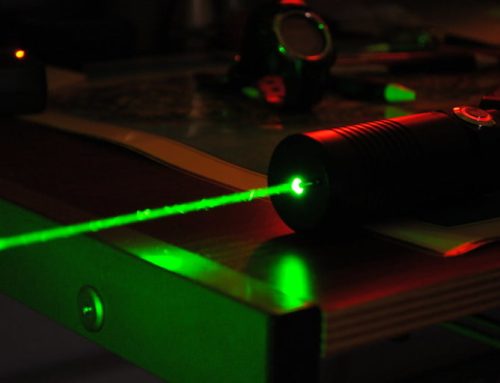
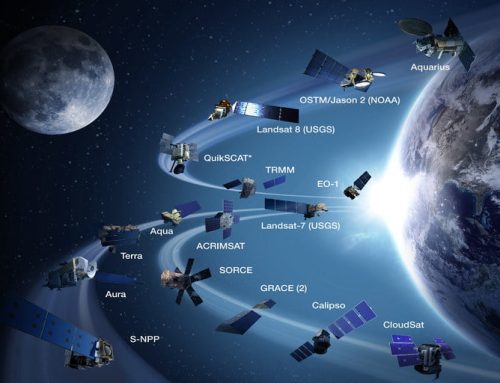

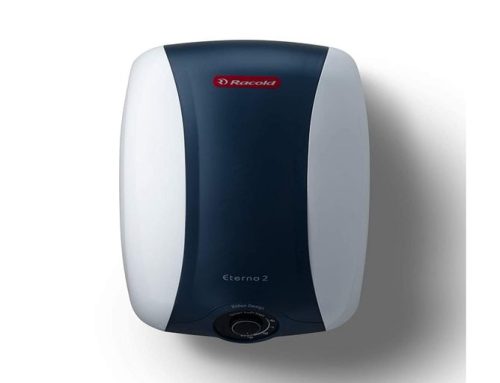

[…] gadget that uses radio frequencies for object detection. You could build a small kind of RADAR, sit it by the shopping store door, and point it at people passing by. Radio waves would emit from […]